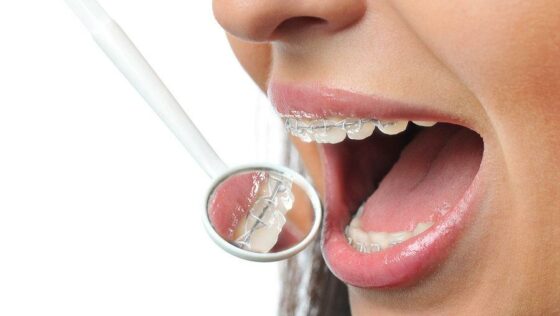6 Simple Techniques For Legacy Orthodontics
6 Simple Techniques For Legacy Orthodontics
Blog Article
Some Known Incorrect Statements About Legacy Orthodontics
Table of ContentsGetting The Legacy Orthodontics To WorkThe Of Legacy OrthodonticsAn Unbiased View of Legacy OrthodonticsThe Basic Principles Of Legacy Orthodontics Legacy Orthodontics Fundamentals Explained
In addition, we use adjustable therapy timetables, flexible repayment choices and an enjoyable, satisfying experience.An orthodontist is a dentist trained to detect, avoid, and treat teeth and jaw irregularities. They deal with existing problems and are trained to identify troubles that may develop in the future. Orthodontists work with people of every ages, from children to grownups. People often link a best smile with healthiness.
Malocclusion, or misaligned teeth, can result in oral concerns, consisting of dental caries, gum tissue disease, and hard or excruciating chewing. Not every person is born with straight teeth. If you have a bad bite or big rooms in between your teeth, you may wish to consult a dental practitioner focusing on orthodontic care.
More About Legacy Orthodontics
( Photo Credit History: DigitalVision/Getty Images) Orthodontists use repaired and detachable oral devices, like braces, retainers, and bands, to change the position of teeth in your mouth. Orthodontic therapy is for oral abnormalities, including: Crooked teethBite problems, like an overbite or an underbiteCrowded teeth or teeth that are as well much apartJaw misalignmentThe objective of orthodontic therapy is to improve your bite.
A healthy and balanced bite guarantees you can consume, eat, and speak effectively. While you might believe of orthodontists as generally for children or teenagers that require dental braces, they can deal with oral problems at any age. Orthodontists attend university, dental college, and orthodontic school. After graduation, they invest 2 or 3 years in an orthodontic residency program.
, however not all dentists are orthodontists. They concentrate on 2 locations: How to correctly and securely relocate teeth Just how to effectively lead advancement in the teeth, jaw, and faceOnce an orthodontist has finished training, they have the option to become board licensed.
9 Easy Facts About Legacy Orthodontics Described
Malocclusion leads to tooth congestion, a misshapen jaw, or uneven bite patterns. Malocclusion is typically treated with: Your orthodontist affixes metal, ceramic, or plastic square bonds to your teeth.
If you have only small malocclusion, you might have the ability to use clear braces, called aligners, as opposed to traditional continue reading this dental braces (https://legacy-orthodontics-47556153.hubspotpagebuilder.com/blog/your-smile-deserves-the-best-discover-your-leesburg-orthodontist). Some individuals require a headwear to assist move teeth into line with pressure from outside the mouth. After dental braces or aligners, you'll require to wear a retainer. A retainer is a personalized device that keeps your teeth in position.
They're most usually made use of on youngsters. They can develop extra area in the mouth without needing to pull teeth. If you have a significant underbite or overbite, you could need orthognathic surgical treatment (additionally called orthodontic surgery) to lengthen or reduce your jaw. Orthodontists make use of cables, medical screws, or plates to sustain your jaw bone.
You may need to see an orthodontist if you have: Crowding or not adequate area for every one of your teethOverbite, when your upper teeth come over your base teethUnderbite, when your base teeth are also much forwardSpacing or concerns with gapsCrossbite, which is when your upper teeth fit behind your bottom teeth when your mouth is closedOpen bite or an upright void between your front base and top teethMisplaced midline, when the facility of your base and upper teeth don't align Fixing a dental malocclusion can: Make biting, eating, and speaking easierImprove the balance of our face and your general appearanceEase pain from temporomandibular joint conditionsSeparate your teeth and make them simpler to cleanse, helping prevent dental cavity or tooth cavities It's usually a dentist who first notices misaligned teeth during a routine test.
The smart Trick of Legacy Orthodontics That Nobody is Talking About

During your first orthodontic assessment, you'll likely have: An oral examPhotos taken of your face and smileDental X-raysPanoramic (360 level) X-rays of your face and headImpressions to create mold and mildews of your teethThese examinations will certainly aid your orthodontist know how to wage your treatment. orthodontics. An orthodontist is a dentist who's had training to treat your teeth and jaw
Orthodontists may carry out surgical treatment, exams,X-rays,and more to aid you attain a more comfortable, healthier smile. An orthodontist is focused on your bite, so something like a cracked tooth would certainly be taken care of by a dental practitioner. Orthodontists are dental professionals yet not all dentists are orthodontists. Orthodontists are focused on your bite, or the way your teeth fit together, and the straightness of your teeth.
Ever questioned how stars always appear to have perfectly aligned teeth? Orthodontists are oral professionals who concentrate on correcting abnormalities in the teeth and jaws.
The Best Strategy To Use For Legacy Orthodontics

, orthodontists have a varied toolkit at their disposal. These reliable dental braces make use of a system of braces bound to the teeth and linked by cables.
These removable trays are custom-made to considerably move the teeth's position. In cases of slim jaws, palatal expanders can be used to produce room for proper tooth alignment.
Report this page